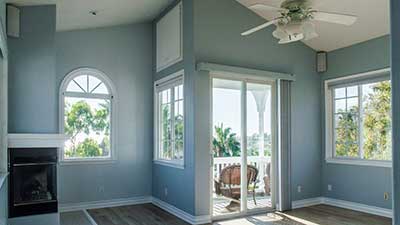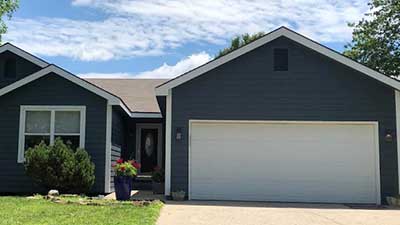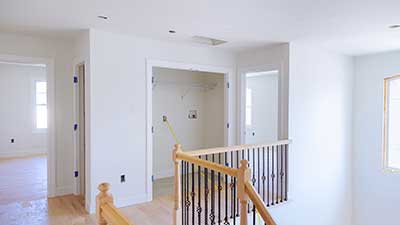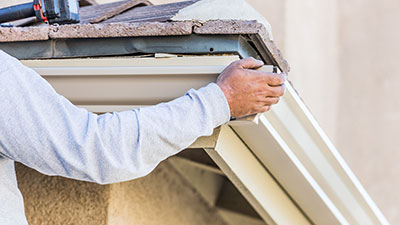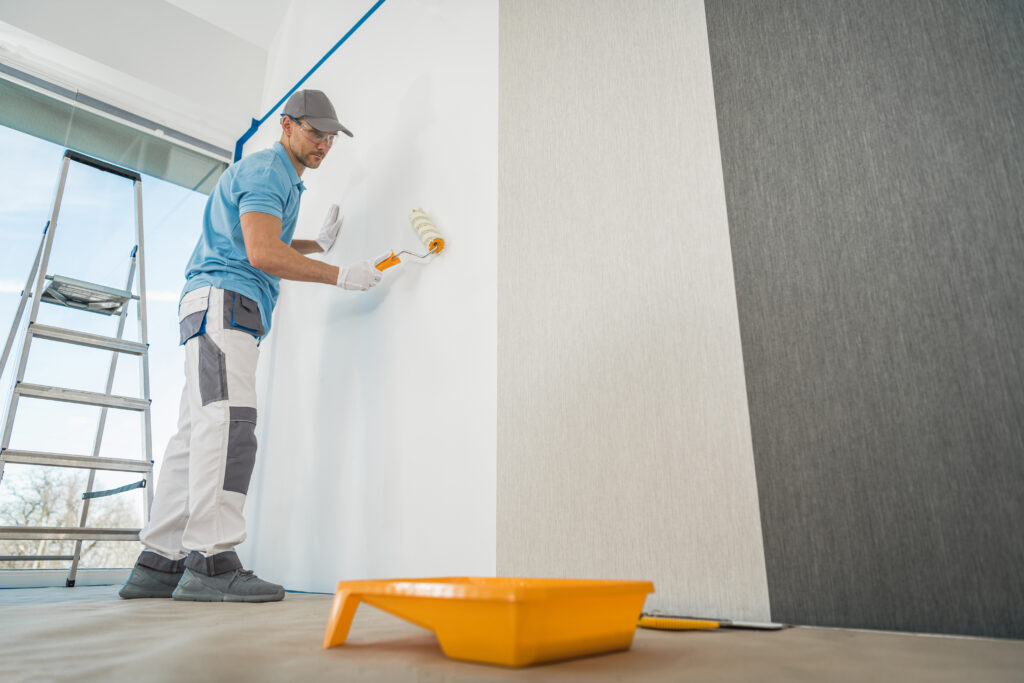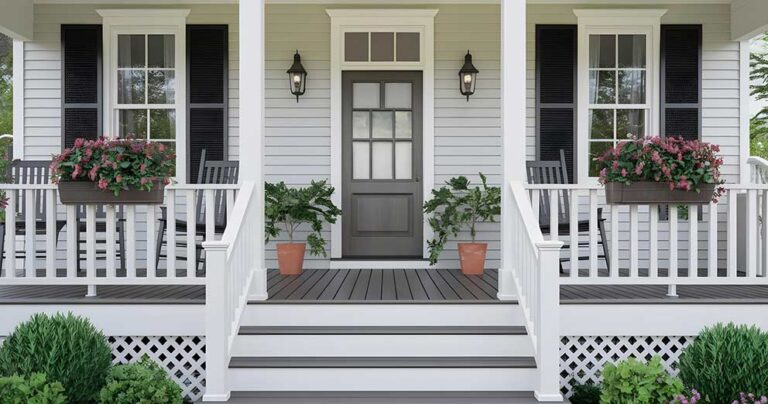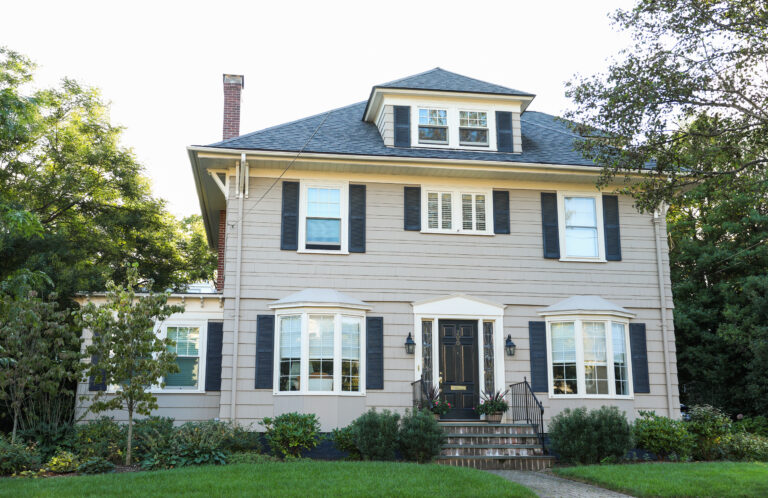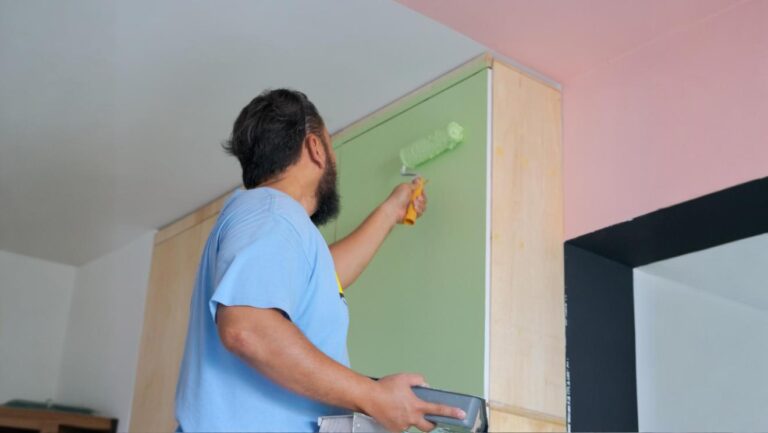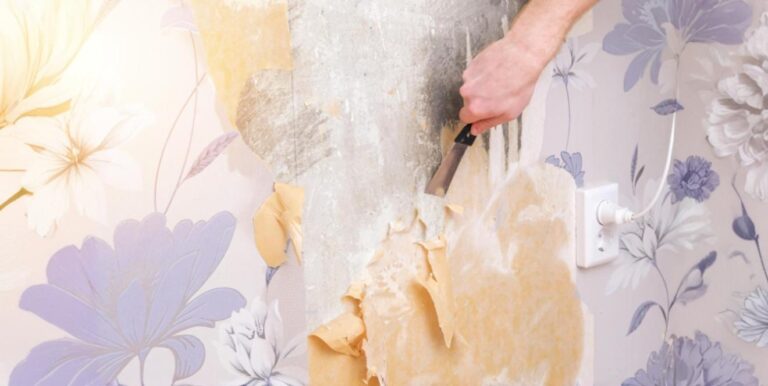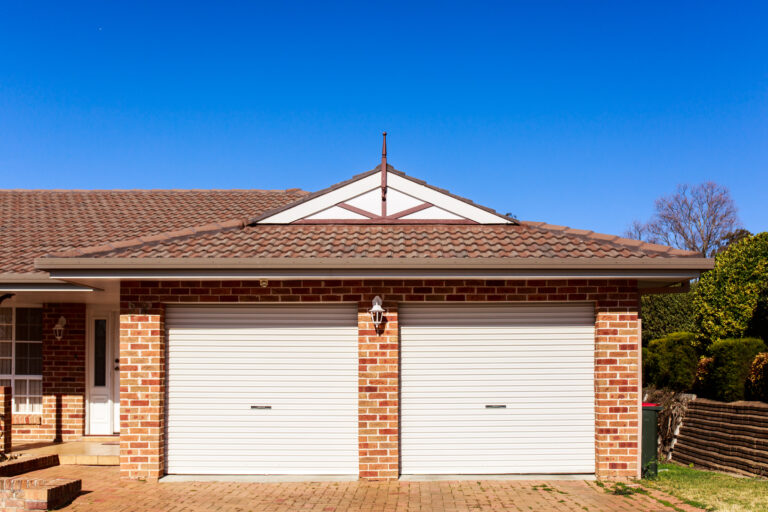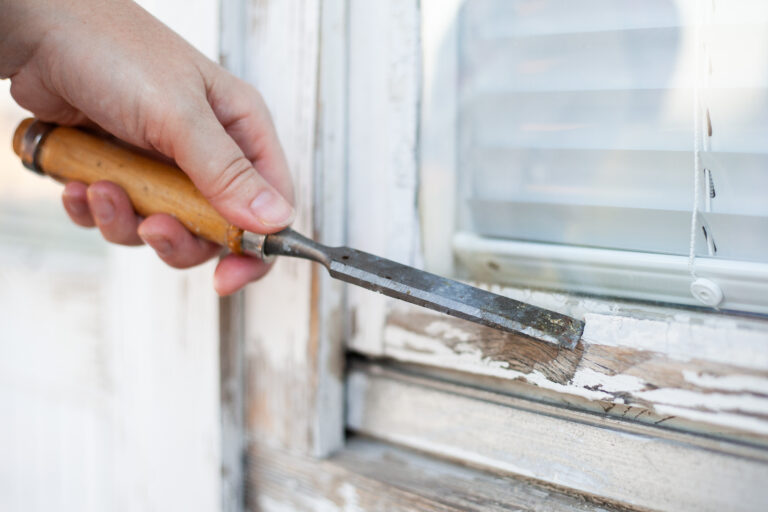You’re standing in the paint aisle, staring at dozens of options. Or maybe you’ve got half-full cans in your garage, and you’re wondering if that exterior paint could work on your living room walls. It’s a common question, and for good reason – paint isn’t cheap, and waste feels wrong.
But before you start painting your bedroom with that leftover siding paint, let’s talk about what makes interior and exterior paints different, and why using the right paint matters for both safety and results.
Key Takeaways
- Interior paint contains fewer harmful chemicals while exterior paint has additives to resist UV rays.
- Exterior paint inside releases dangerous VOCs and fumes that linger in confined spaces.
- Exterior house paint dries slower on interior walls and may remain tacky indoors.
- Modern interior paints offer excellent durability without the risks of outdoor paint.
- OnDemand Painters provides professional services for proper paint selection and application.
- The main difference between paint types is their chemical composition for specific environments.
What’s the Difference Between Interior and Exterior Paint?
When you look at interior paint and exterior paint side by side, they might seem identical. Same cans, similar colors, both designed to cover surfaces – but the similarities mostly end there.
Interior paint is made specifically for walls and surfaces inside your home. These paints focus on:
- Stain resistance for easier cleaning
- Low odor formulations
- Minimal VOCs (volatile organic compounds)
- Scuff resistance
- Smooth application
Exterior paint, on the other hand, battles much harsher conditions. It’s engineered to:
- Resist UV rays from the sun
- Withstand temperature changes
- Repel moisture
- Fight mold and mildew
- Maintain color despite weather exposure
The main difference between interior and exterior paint comes down to their chemical makeup. Exterior paints contain more resins and additives that help them expand and contract with changing weather. They also include fungicides and UV-resistant compounds that help them withstand the great outdoors.
Interior and exterior paint formulations differ significantly because they serve different purposes. While interior paints prioritize washability and low emissions, exterior paints prioritize durability and weather resistance.
Can I Use Exterior Paint Inside? The Short Answer
The short answer is: technically yes, but you really shouldn’t.
While exterior paint will adhere to interior walls, using it inside your home creates several problems. The same additives and chemicals that make exterior paint tough against weather make it problematic for indoor environments.
When you use exterior paint inside, you expose yourself and your family to higher levels of VOCs and other chemicals that were designed to dissipate in open air. Inside confined spaces, these compounds linger and can cause both short and long-term health issues.
Some people think using exterior paint inside will create a more durable finish. The truth is, exterior paint performs differently indoors. Without exposure to sunlight and weather, it may not cure properly and could remain soft or tacky longer than expected.
Why You Shouldn’t Use Exterior Paint Indoors
Using exterior paint indoors creates several significant problems:
Health risks from VOCs
Exterior paint contains higher levels of volatile organic compounds. These chemicals release harmful fumes as the paint dries and cures. In confined indoor spaces, these fumes concentrate and can cause:
- Headaches
- Dizziness
- Eye, nose, and throat irritation
- Nausea
- Breathing difficulties
- Potential long-term effects on the liver, kidneys, and central nervous system
Lingering paint fumes
While interior paint odors typically dissipate within a day or two, exterior paint fumes can linger for weeks or even months. This happens because exterior paint isn’t designed to cure properly in indoor environments.
Indoor air quality issues
Even after exterior paint appears dry, it continues to emit VOCs. This off-gassing process can continue for months, degrading your indoor air quality and potentially causing respiratory problems.
Performance problems
Exterior paint used indoors often doesn’t perform as expected. It may:
- Take much longer to dry completely
- Remain tacky or soft
- Scratch more easily than properly cured paint
- Create an uneven finish
- Develop problems with washing or cleaning
The risks of using exterior paint indoors simply aren’t worth any perceived benefits. Your health and the performance of the paint both suffer when you use exterior paint inside your home.
What Happens If You Accidentally Use Exterior Paint Inside?
Let’s say you’ve already painted your living room with exterior paint before reading this article. What now?
First, don’t panic. The immediate concerns are ventilation and exposure. Open all windows and doors, run fans, and limit time spent in the freshly painted area. If you experience headaches, dizziness, or respiratory irritation, consider staying elsewhere until the fumes diminish.
Long-term, you have a few options:
- Wait for the paint to cure fully (which could take several weeks) and then apply a sealing primer
- Remove the exterior paint completely (the safest but most labor-intensive option)
- Apply multiple coats of interior paint over the exterior paint after proper priming
For serious concerns or if you’re dealing with large areas, it’s worth consulting professionals. OnDemand Painters (OP) specializes in correcting paint issues and can advise on the safest remediation approach based on your specific situation.
The health risks from exterior paint fumes depend on several factors:
- The size of the painted area
- Your home’s ventilation
- How long the paint has been drying
- Individual sensitivity to chemicals
Children, elderly people, and those with respiratory conditions face the highest risks from exterior paint fumes indoors.
Exceptions: When Might You Use Exterior Paint Inside?
While generally discouraged, a few situations exist where exterior paint inside might be acceptable:
Garages and workshops: Since these spaces are often well-ventilated and semi-outdoor in nature, exterior paint poses fewer risks. Just ensure adequate airflow during and after painting.
Utility spaces: Laundry rooms or mud rooms that have exterior doors and frequent ventilation might be candidates for exterior paint if extreme durability is needed.
Enclosed porches: Spaces that blur the line between indoor and outdoor may benefit from exterior paint formulations.
Even in these exceptions, follow these guidelines:
- Use low-VOC exterior paints when possible
- Ensure excellent ventilation during application and curing
- Vacate the space during painting and initial drying
- Consider temperature changes if the space isn’t climate-controlled
Alternative Solutions for Durable Interior Painting
If you’re concerned about durability, several options exist that don’t involve using outdoor paint inside your home:
High-quality interior paints
Premium interior paints now offer excellent durability without the harmful additives of exterior formulations. Look for:
- Scuff-resistant formulas
- Washable finishes
- Stain-blocking properties
- Mildew-resistant options for bathrooms
Specialty interior formulations
Many manufacturers now make interior paints specifically designed for high-traffic areas or moisture-prone spaces like kitchens and bathrooms.
Proper preparation techniques
Often, paint failure comes from poor prep rather than the paint itself. For durability:
- Clean surfaces thoroughly
- Repair imperfections
- Use appropriate primers
- Apply multiple thin coats instead of one thick coat
With today’s advanced interior paint options, you can achieve remarkable durability without resorting to exterior formulations.
Conclusion
While it might be tempting to use that leftover exterior paint for your indoor project, the risks far outweigh any potential benefits. The chemicals that make exterior paint weather-resistant can harm your health when used indoors, and the paint itself often performs poorly in interior environments.
Instead, choose high-quality interior paints designed for your specific needs. For high-traffic areas or spaces requiring extra durability, consult with professionals like OnDemand Painters who can recommend appropriate products and application techniques.
Remember: paint isn’t just about color. The right formulation ensures both beautiful results and a healthy home environment. When in doubt, keep exterior paint where it belongs—outside.
FAQs
Can you use interior paint outdoors for exterior surfaces?
Interior paint lacks the additives to resist fading from UV rays and will deteriorate quickly when exposed to outdoor elements.
What’s the main difference between exterior and interior paint?
Exterior paint contains more resins to withstand weather conditions, while interior paint focuses on washability and low emissions for interior spaces.
Is acrylic latex paint safe for indoor use?
Most interior paints use acrylic latex formulations specifically designed to minimize fumes and create a durable finish for your indoor paint job.
How do UV rays affect paint durability?
UV rays cause standard paint to fade and break down, which is why exterior paint contains special additives to resist fading and deterioration.
Can exterior paint be used for bathroom walls?
While exterior paint resists moisture, most interior paints now offer bathroom-specific formulations that provide moisture resistance without harmful fumes.
How long should a quality paint job last?
A properly applied interior paint job should last 5-10 years, while exterior surfaces typically need repainting every 5-7 years depending on climate conditions.






